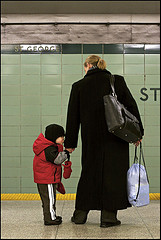 A press release this morning reports on new research published in the June issue of the American Sociological Review, which conclude that steep employment gains for women disprove the idea that more women are ‘opting out’ of full-time employment in favor of staying home.
A press release this morning reports on new research published in the June issue of the American Sociological Review, which conclude that steep employment gains for women disprove the idea that more women are ‘opting out’ of full-time employment in favor of staying home.
Sociologist Christine Percheski studied employment trends among college-educated women, born between 1906 and 1975. She found that women’s employment levels had sharply increased and has especially changed for mothers with young children and women employed in traditionally male fields. She also concludes that the gap between childless women and mothers has diminished over time.
And debunking the ‘opting out’ myth…
“Despite anecdotal reports of successful working women returning to the home to assume child care responsibilities, less than 8 percent of professional women born since 1956 leave the workforce for a year or more during their prime childbearing years, according to the study.”
